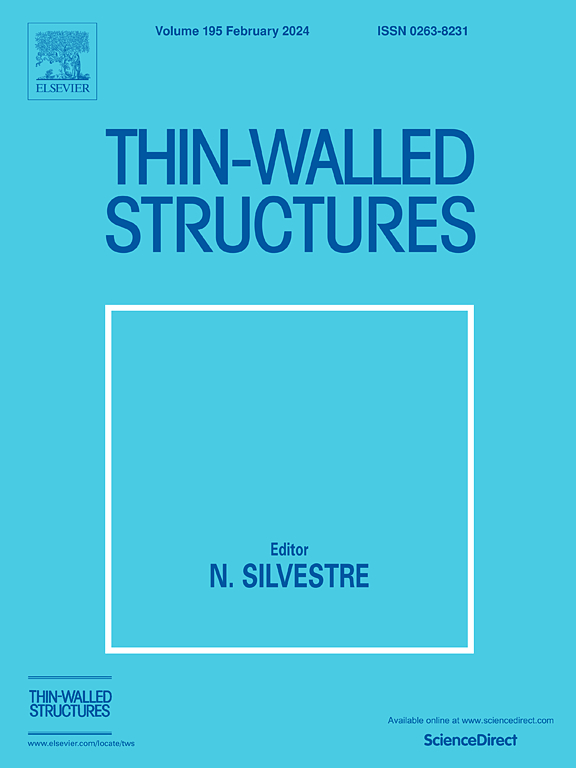通过蠕变松弛释放 X80 管道环缝对接焊接中的残余应力:模拟和实验
IF 5.7
1区 工程技术
Q1 ENGINEERING, CIVIL
引用次数: 0
摘要
环缝对接焊缝的残余应力给大口径油气管道带来了安全隐患,因此有必要对焊接残余应力进行深入研究,并开发有效的方法来缓解这些应力,从而提高结构的完整性。在这项工作中,开发了一个有限元环缝对接焊接模型来预测 X80 管道的残余应力。根据适用于 X80 钢的诺顿蠕变模型,模拟了局部焊后热处理(PWHT)产生的残余应力释放。模拟结果包括 PWHT 前后的残余应力,并通过盲孔钻孔测量进行了验证。结果表明,在 PWHT 之后,所有方向的焊接残余应力都显著降低,最大应力降低约 360 兆帕。残余应力释放的主要机械机制被确定为高温蠕变,并得出结论:当加热温度超过蠕变激活温度时,PWHT 能有效缓解焊接残余应力。有限元分析结果与实验测量的残余应力之间的一致性证实了基于有限元的焊接残余应力预测方法的有效性和可行性。本文章由计算机程序翻译,如有差异,请以英文原文为准。
Creep relaxation to relieve residual stress in girth-butt welded X80 pipelines: Simulation and experiment
The residual stress in girth-butt weld presents safety risks for large-diameter oil-gas pipelines, necessitating an in-depth investigation into the welding residual stress and the development of effective methods to mitigate these stresses, thereby enhancing structural integrity. In this work, a finite element girth-butt welding model was developed to predict the residual stress of X80 pipelines. The residual stress relief resulting from local post-weld heat treatment (PWHT) was simulated based on the Norton creep model applicable to X80 steel. The simulation results, encompassing the residual stress both before and after PWHT, were validated through blind-hole drilling measurements. The results demonstrate that the welding residual stresses across all orientations were significantly reduced following PWHT, with a maximum stress reduction of approximately 360 MPa. The primary mechanical mechanism for residual stress relief was identified as high-temperature creep, and it was concluded that the PWHT alleviated welding residual stress effectively when the heating temperature exceeded the creep activation temperature. The consistency between the finite element analysis results and the experimentally measured residual stresses affirms the validity and feasibility of the finite-element-based approach for predicting welding residual stresses.
求助全文
通过发布文献求助,成功后即可免费获取论文全文。
去求助
来源期刊

Thin-Walled Structures
工程技术-工程:土木
CiteScore
9.60
自引率
20.30%
发文量
801
审稿时长
66 days
期刊介绍:
Thin-walled structures comprises an important and growing proportion of engineering construction with areas of application becoming increasingly diverse, ranging from aircraft, bridges, ships and oil rigs to storage vessels, industrial buildings and warehouses.
Many factors, including cost and weight economy, new materials and processes and the growth of powerful methods of analysis have contributed to this growth, and led to the need for a journal which concentrates specifically on structures in which problems arise due to the thinness of the walls. This field includes cold– formed sections, plate and shell structures, reinforced plastics structures and aluminium structures, and is of importance in many branches of engineering.
The primary criterion for consideration of papers in Thin–Walled Structures is that they must be concerned with thin–walled structures or the basic problems inherent in thin–walled structures. Provided this criterion is satisfied no restriction is placed on the type of construction, material or field of application. Papers on theory, experiment, design, etc., are published and it is expected that many papers will contain aspects of all three.
 求助内容:
求助内容: 应助结果提醒方式:
应助结果提醒方式:


